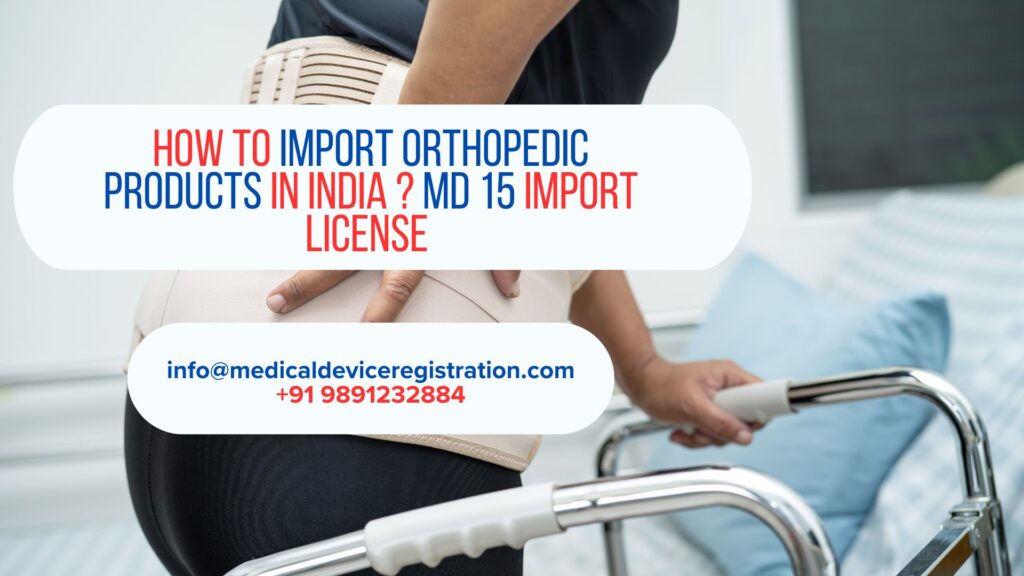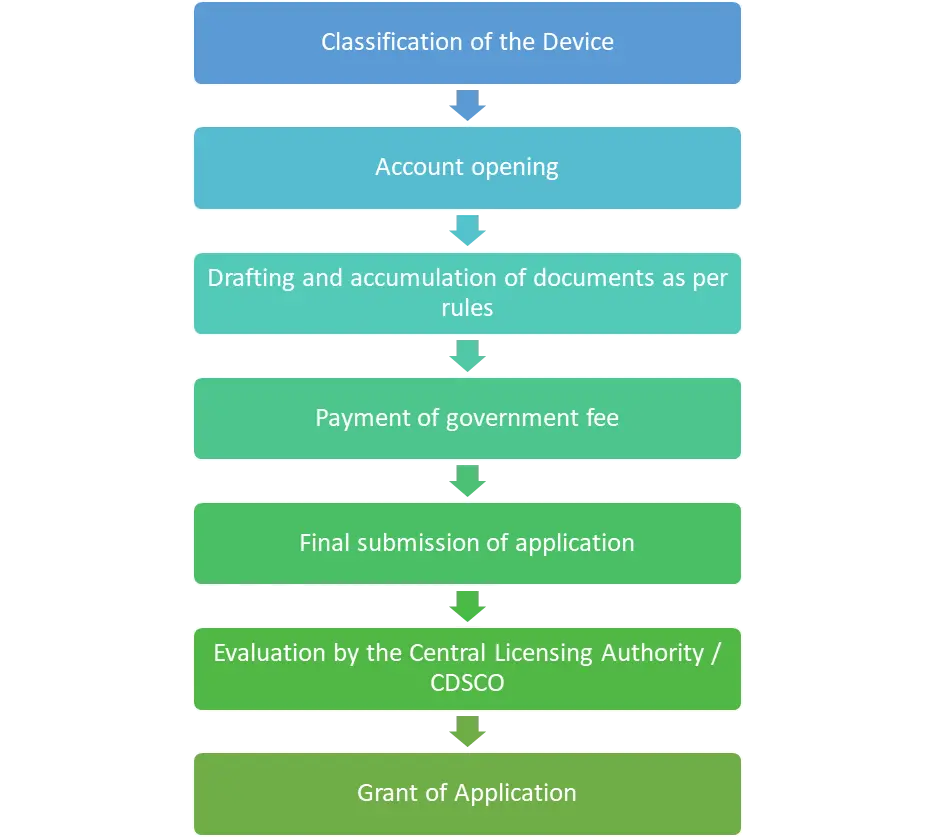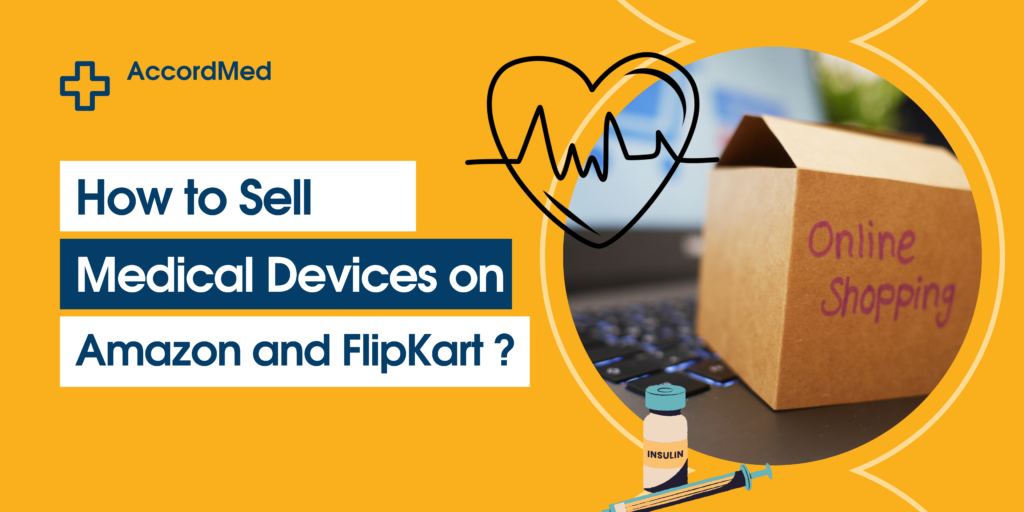
At AccordMed Consultants, we specialize in simplifying the complex process of importing orthopedic products into India. Whether you’re a manufacturer. Importer or distributor, our expert guidance ensures compliance with India’s regulatory framework. Here’s a step-by-step overview of the medical device import process for orthopedic products in India:
1. Understand Regulatory Requirements
Orthopedic products fall under the purview of the Central Drugs Standard Control Organization (CDSCO) in India. These products are classified as medical devices and are regulated under the Drugs and Cosmetics Act, 1940, and the Medical Devices Rules, 2017. Importers must:
- Determine the device’s classification (Class A, B, C, or D).
- Ensure the product meets applicable safety and performance standards.
Classification of Orthopedic Devices
Orthopedic products include items like joint implants (hip, knee, etc.), bone plates, screws, spinal instruments, and other devices used for orthopedic treatments. These medical devices are classified into four risk-based classes:
- Class A: Low Risk Devices
- Class B: Low to Moderate Risk Devices
- Class C: Moderate to High Risk Devices
- Class D: High Risk Devices
Higher-risk devices (e.g., implants) require more rigorous regulatory scrutiny. These regulations aim to ensure patient safety and promote the availability of high-quality medical devices in India.
2. Appoint an Indian Authorized Agent
If you’re a foreign manufacturer, you must appoint an Indian Authorized Agent (IAA) who will act as your legal representative in India. The IAA is responsible for liaising with the CDSCO and ensuring compliance with local laws.
How to get CDSCO MD 15 Import license for Orthopedic Products?
To import orthopedic products, you must obtain an Form MD-15 Import license from the CDSCO. The process involves:

4. Labeling Requirements
Ensure the orthopedic products comply with Indian labeling norms before they are marketed. Labels must include:
- Name and address of the importer.
- Manufacturing date and expiry date.
- Import license number.
- Instructions for use and storage conditions.
Medical Device Registration Services CDSCO Registration
Get expert support for CDSCO medical device registration. Contact us for a free consultation call today!
5. Customs Clearance
Orthopedic products must clear customs before entering the Indian market. The customs clearance process involves:
- Submitting the Import License and Registration Certificate.
- Providing an invoice, packing list, and airway bill.
- Coordinating with customs officials for inspections and verifications.
6. Post-Market Surveillance
After the products are imported and distributed, you must adhere to post-market surveillance requirements. This includes:
- Reporting adverse events to the CDSCO.
- Maintaining records of sales and distribution.
- Cooperating with inspections or audits by regulatory authorities.
7. Relaxation to Class A Non-Sterile Non-Measuring Devices (Low risk devices)
Relaxation is provided by the CDSCO for import of Class A NSNM devices. These are relaxed from the stringent requirements as compared to other devices. Such low risk devices are needed to be registered with CDSCO as per GSR 777(E).
Navigating India’s medical device import process can be challenging. At AccordMed Consultants, we offer end-to-end support, including:
- Regulatory advisory services.
- Assistance with documentation and application submission.
- Coordination with CDSCO and customs officials.
- Post-approval compliance management.
By partnering with AccordMed Consultants, you can focus on delivering high-quality orthopedic products while we handle the regulatory complexities. Contact us today to streamline your import process and expand your business in India.
Frequently Asked Questions
How to Import Orthopedic Products in India ? MD 15 Import license
Orthopedic products are regulated by the Central Drugs Standard Control Organization (CDSCO) under the Drugs and Cosmetics Act, 1940 and the Medical Devices Rules, 2017. These regulations ensure product safety and quality.
Orthopedic devices are classified into four risk-based categories:
- Class A: Low Risk (e.g., non-implantable devices)
- Class B: Low to Moderate Risk
- Class C: Moderate to High Risk
- Class D: High Risk (e.g., implants like hip or knee replacements)
Higher-risk devices require more rigorous scrutiny to ensure safety and efficacy.
An Indian Authorized Agent is a local representative appointed by foreign manufacturers. The IAA is responsible for liaising with the CDSCO, ensuring compliance with Indian regulations, and handling post-market responsibilities.
To obtain Import Registration, you must submit the required documents to the CDSCO, including:
- Details of the device (classification, safety, and performance data).
- Proof of compliance with international and Indian standards.
- Information about the manufacturer and importer.
The CDSCO reviews the application and grants the MD-15 registration upon approval.
Labels on orthopedic products must include:
- Name and address of the importer.
- Manufacturing and expiry dates.
- Import license number.
- Instructions for use and storage conditions.
These requirements ensure transparency and product safety for end-users.
Yes, Class A NSNM devices (low-risk devices) are exempt from stringent regulatory requirements but must still be registered with the CDSCO as per GSR 777(E).
Customs clearance includes:
- Submission of the Import License (MD-15) and Registration Certificate.
- Providing an invoice, packing list, and airway bill.
- Coordinating inspections and verifications with customs officials.
Importers must:
- Report adverse events to the CDSCO.
- Maintain detailed records of sales and distribution.
- Cooperate with regulatory inspections and audits.
This ensures ongoing compliance and patient safety.
AccordMed Consultants provides comprehensive services, including:
- Regulatory guidance.
- Assistance with documentation and application submission.
- Coordination with CDSCO and customs.
- Post-approval compliance management.
By partnering with AccordMed Consultants, you can streamline the import process and focus on delivering high-quality products.


